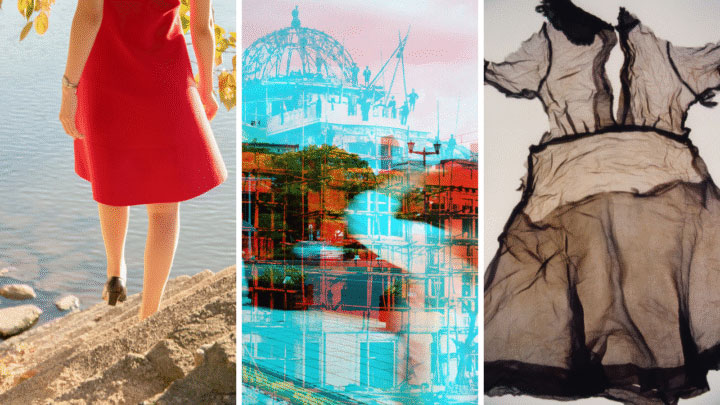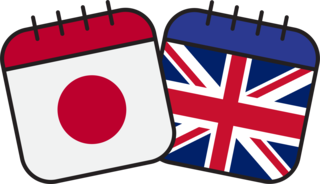
Chiune Sugihara (Diplomatic Archives of the Ministry of Foreign Affairs of Japan)
ひろしま/hiroshima
- 10 September - 24 November 2025
- Monday–Friday 9:30 am–5:00 pm (except public holidays)
- Daiwa Anglo-Japanese Foundation, 13/14 Cornwall Terrace, Outer Circle (entrance facing Regent's Park), London NW1 4QP
- https://dajf.org.uk/exhibitions/%e3%81%b2%e3%82%8d%e3%81%97%e3%81%be-hiroshima
- +44 (0)20 7486 4348
- events@dajf.org.uk
- Tweet
Amid intensifying conflicts around the world, some of them associated with nuclear threats, Hiroshima’s experience as history’s first nuclear target is increasingly remembered and highlighted. The city’s image both as a site of war devastation and as a symbol of peace has been emphasised and selectively used for political purposes and in attempts to shape narratives, whilst the everyday reality of its inhabitants and their personal memories have largely been overlooked.
To mark the 80th anniversary of the Hiroshima atomic bombing, this exhibition of work by three acclaimed Japanese women artists shifts its gaze to another side of the city and its people – the changes, the things that remain, the personal and genuine memories – the everyday, the ordinary, and contemporary society. This exhibition encourages us to see Hiroshima differently, as a city that was traumatised, once again teeming with life.
Ishiuchi Miyako breathes new life into personal belongings, reviving the individual memories of those who once lived in Hiroshima. Through this process, she seeks to liberate these objects from the confines of a fixed historical narrative.
Fujioka Aya captures the city’s current tensions and dynamism through street photography from the perspective of the people living in present-day Hiroshima, seeking to evoke the memory of Hiroshima’s past from its present.
Sasaoka Keiko has spent years photographing Hiroshima as a ‘Park City’, documenting the traces of memories that have vanished from today’s urban landscape to allow us to consider the significance of seeing what is no longer visible.
This exhibition has been made possible through the generous support of The Third Gallery Aya.
About The contributors
Ishiuchi Miyako
Ishiuchi Miyako was born in Gunma Prefecture and grew up in the city of Yokosuka in Kanagawa Prefecture. In 1979, she won the 4th Kimura Ihei Award for her work Apartment. In 2005, she represented Japan at the Venice Biennale with her series Mother, for which she photographed items inherited from her late mother. In 2007, she began her ongoing and internationally-renowned series ひろしま/hiroshima, for which she photographs belongings of atomic bomb victims. She received the Japanese Medal of Honor with Purple Ribbon in 2013, the Hasselblad Award in 2014, the Asahi Prize in 2022, and the Women in Motion Award in 2024. Her major exhibitions in recent years have included the solo exhibitions Postwar Shadows at the J. Paul Getty Museum (2015) and Grain and Image at the Yokohama Museum of Art (2017), as well as Step Through Time at the Okawa Museum of Art (August 2024).
Fujioka Aya
Fujioka Aya was born in Hiroshima in 1972 and attended Nihon University College of Art. She has been exhibiting her work since 1996. In 2005, she won the Visual Arts Photo Award given to promising young photographers, judged by Daido Moriyama, Yoshihiko Ueda, and Masato Seto, among others. The prize was awarded for her work Comment te dire adieu, then published by Visual Arts. Akaaka Art Publishing published her work I Don’t Sleep in late 2009, and it won the Photographic Society of Japan’s Newcomer’s Award. She lived and worked in New York from 2007 to 2013. Since returning to Japan, she has lived in Hiroshima, where she produced the work Here Goes River, which won the Ina Nobuo Award in 2017 and the Hayashi Tadahiko and Kimura Ihei Awards in 2018. Here goes River is a fresh and engaging snapshot work that expresses the historical tragedy latent in present-day Hiroshima’s everyday life. Fujioka currently lives and works in Japan.
Sasaoka Keiko
Sasaoka Keiko was born in 1978 in Hiroshima, and began photographing around the Hiroshima Peace Memorial Park in 2001. This project was published as the photography book PARK CITY in 2009 and remains ongoing. After the Great East Japan Earthquake of 2011, she published Remembrance, a series of 41 photo booklets featuring images taken in the disaster areas. Since 2015, she has continued this theme with SHORELINE, a series focused on Japan’s coastal regions. As a founding member of the photographers’ gallery, she coordinated a special issue of the photographers’ gallery press – Issue 12 – Photographs of Ground Zero, 1945–1952, which surveyed photography in Hiroshima after the atomic bomb. Sasaoka’s work has been widely exhibited and recognized with several awards, including the Newcomer’s Award of the Photographic Society of Japan, a New Figure Encouragement Prize from the Photo City Sagamihara Award, and a Hayashi Tadahiko Award.
Admission Free
Related events:
Private View: ひろしま/hiroshima
Tuesday 9 September , 5pm-8pm
Artist Talk by Ishiuchi Miyako
Tuesday 9 September , 6:00pm – 7:00pm
